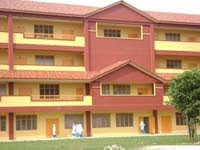An Internet Protocol (IP) address is a numerical label that is assigned to devices participating in a computer network, that uses the Internet Protocol for communication between its nodes.[1] An IP address serves two principal functions: host or network interface identification and location addressing. Its role has been characterized as follows: "A name indicates what we seek. An address indicates where it is. A route indicates how to get there."[2]
The designers of TCP/IP defined an IP address as a 32-bit number[1] and this system, known as Internet Protocol Version 4 or IPv4, is still in use today. However, due to the enormous growth of the Internet and the resulting depletion of available addresses, a new addressing system (IPv6), using 128 bits for the address, was developed in 1995[3] and last standardized by RFC 2460 in 1998.[4] Although IP addresses are stored as binary numbers, they are usually displayed in human-readable notations, such as 208.77.188.166 (for IPv4), and 2001:db8:0:1234:0:567:1:1 (for IPv6).
The Internet Protocol also routes data packets between networks; IP addresses specify the locations of the source and destination nodes in the topology of the routing system. For this purpose, some of the bits in an IP address are used to designate a subnetwork. The number of these bits is indicated in CIDR notation, appended to the IP address; e.g., 208.77.188.166/24.
As the development of private networks raised the threat of IPv4 address exhaustion, RFC 1918 set aside a group of private address spaces that may be used by anyone on private networks. They are often used with network address translators to connect to the global public Internet.
The Internet Assigned Numbers Authority (IANA), which manages the IP address space allocations globally, cooperates with five Regional Internet Registries (RIRs) to allocate IP address blocks to Local Internet Registries (Internet service providers) and other entities.
Wednesday 21 April 2010
Subscribe to:
Posts (Atom)


